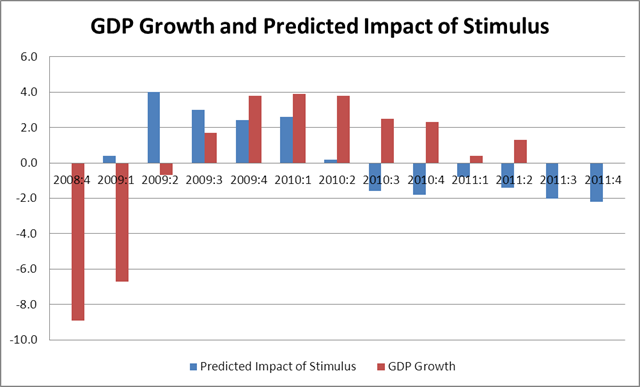July 30, 2011
One result of the the revisions to GDP published by the Commerce Department yesterday is that the data now show a much steeper drop in GDP in the post-Lehman panic. At first glance, the new data would appear to make the stimulus look more effective. The chart below shows quarterly growth rates beginning with the 4th quarter of 2008 and the Congressional Budget Office’s predicted effect of the stimulus (the average of the high and low numbers).
Click to Enlarge
Source: Bureau of Economic Analysis and Congressional Budget Office.
This is not a perfect fit, but no one expects the stimulus to be the only factor moving the economy. In any case, the pattern of growth does seem to fit the predicted impact of the stimulus. When we saw big boost to growth in 2009, the growth rate went from a large negative to a moderate positive. When the impact of the stimulus turned negative in 2010, growth began to slow. If the pattern continues, we should see more weak growth in the second half of the year.
There have been far more careful analyses of the impact of the stimulus, but this general picture sure supports the case that it had a real effect in turning the economy around. The problem is that it was not large enough or long enough.







